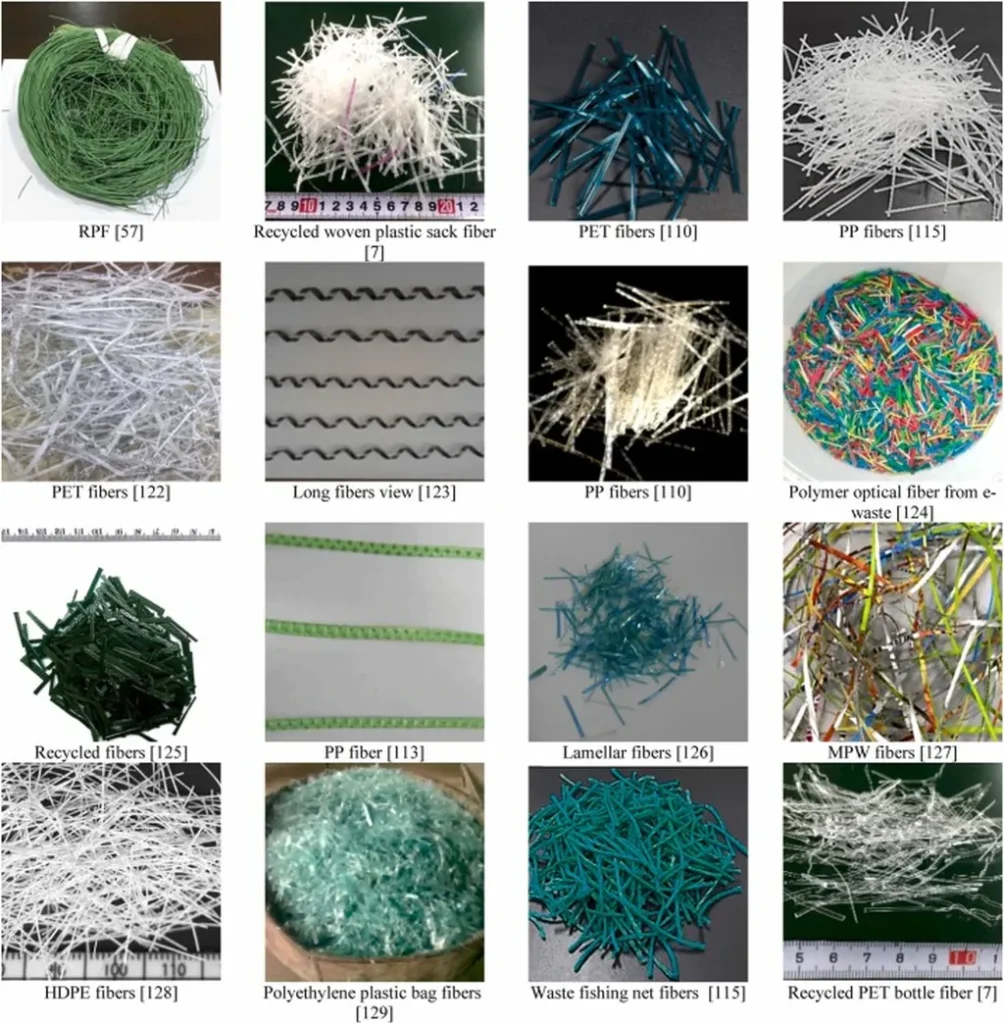In the quest for sustainable construction materials, researchers have turned to an unlikely ally: recycled plastic. A recent study published in the *Advances in Bridge Engineering* (translated from Arabic as “Advances in Bridge Engineering”) explores how incorporating recycled polyethylene terephthalate (PET) microfibers into concrete can enhance its performance while reducing environmental impact. The research, led by Huda Zuhair Kubba of the Technical Institute of Babylon at Al-Furat Al-Awsat Technical University (ATU), delves into the combined effects of water-to-binder (w/b) ratios and PET microfibers on concrete’s fresh properties, mechanical performance, durability, and microstructure.
The study reveals that lower w/b ratios (0.35–0.40) produce denser concrete mixes with reduced workability, a challenge that is further compounded by the addition of PET fibers (0.5–1.0% by binder weight). To counteract this, increased dosages of superplasticizer were necessary. “The addition of PET fibers increased the air content in the concrete, which slightly decreased its density,” explains Kubba. “However, the mechanical benefits outweighed these minor drawbacks.”
Mechanical tests showed significant improvements, with up to a 20% increase in compressive strength at lower w/b ratios. The inclusion of PET fibers also enhanced splitting tensile and flexural strengths by up to 15%. “The fibers act as a reinforcement, improving the concrete’s ability to withstand stress and reducing the likelihood of microcracking,” Kubba notes.
Durability tests were equally promising. Accelerated carbonation testing revealed that the incorporation of 1.0% PET fibers reduced carbonation depths by up to 25% in low w/b mixes. This is a crucial finding for the energy sector, where concrete structures often face harsh environmental conditions. Reduced carbonation means enhanced longevity and lower maintenance costs, which can translate to significant savings over the lifecycle of a project.
Microstructural analysis using Scanning Electron Microscopy (SEM) confirmed that the PET fibers were well-dispersed within the concrete matrix, forming strong bonds and reducing microcracking. X-ray Diffraction (XRD) results indicated increased calcite (CaCO3) peak intensities and decreased portlandite (Ca(OH)2) peaks, suggesting pronounced carbonation, especially in fiber-reinforced, low w/b samples.
The implications of this research are far-reaching. By combining low w/b ratios with recycled PET microfibers, the construction industry can produce high-performance concrete that is not only stronger and more durable but also more sustainable. This approach aligns with the growing demand for eco-friendly materials and offers a viable solution for reducing the environmental footprint of construction projects.
As the energy sector continues to invest in large-scale infrastructure projects, the adoption of such innovative materials could lead to more resilient and cost-effective structures. “This research opens up new possibilities for the use of recycled materials in concrete,” Kubba says. “It’s a step towards a more sustainable future for the construction industry.”
The study, published in the *Advances in Bridge Engineering*, underscores the potential of recycled PET microfibers to revolutionize concrete technology. As the industry grapples with the challenges of sustainability and performance, this research offers a compelling case for the integration of recycled materials into mainstream construction practices. The findings not only enhance our understanding of concrete’s mechanical and durability properties but also pave the way for more innovative and environmentally conscious solutions in the years to come.

